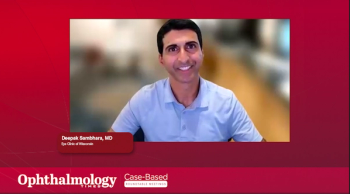
Strategies for Protecting Vision in Geographic Atrophy
An expert details practical imaging and counseling strategies for slowing vision loss in geographic atrophy through case-based management and patient engagement.
Dr. Deepak Sambhara kicks off a case-based roundtable overview of geographic atrophy (GA) focused on protecting vision through practical imaging and counseling. He presents a 79-year-old active professional with progressive blur and classic GA findings across various modalities. He emphasizes how OCT in combination with NIR outperform Fundus Autofluorescence (FAF) for assessing foveal involvement, which shapes management. After starting pegcetacoplan, vision and OCT remained “vanilla” (stable) through 18 months and 7 injections, emphasizing that success in GA is slowed progression, not reversal. The participants discuss imaging cadence—some obtain FAF every visit; Dr. Sambhara favors FAF about every 6 months to document growth. He models patient-communication “curveballs” for asymptomatic referrals, using side-by-side imaging to build insight and adherence. The fellow eye (20/20) shows high-risk features prompting close surveillance and timely treatment discussions.
Newsletter
Don’t miss out—get Ophthalmology Times updates on the latest clinical advancements and expert interviews, straight to your inbox.


















































.png)


